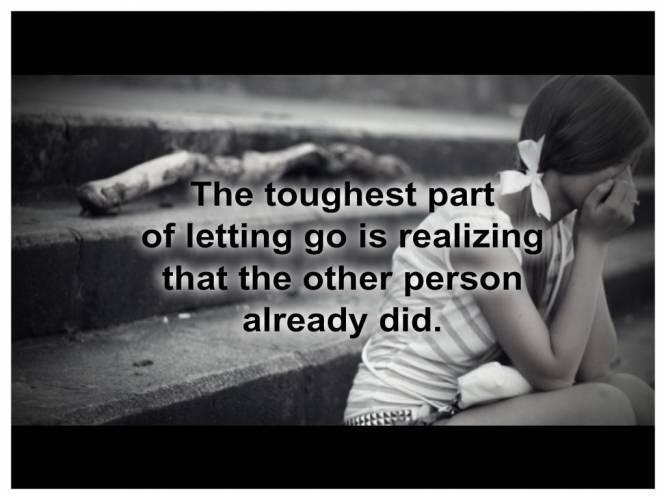Greetings Yoga Community!
With the start of February most of us have set our New Year Sankapla (resolve,) sealed it with 108 sun salutations, let go of the past year and stepped into 2018. But have we? Have we truly let go of the past? In reviewing my personal year 2017 the concept of letting go struck me deeply. How many of us even know how to let go? In Indian and yogic philosophy, samskaras are the mental impressions left by all thoughts, actions and intents that an individual has ever experienced. They can be thought of as psychological imprints. They are below the level of normal consciousness. Based on yoga knowledge all our dukkah (suffering) in life can often be attributed to our negative samskaras. So, in order to “let go” we must work on our negative samskaras.
First we must ask the question, what is causing us suffering? We all experience suffering. We experience trauma such as, divorce, death, illness, loss of jobs, loss of friends and family, even the birth of a child (which most of us relate with joy) can be a suffering experience. Identify any negative samskaras in your own life? Often people don’t want to identify their negative samskaras because it is not always pleasant to deal with them. Many people suppress them. However if we don’t deal with them, then we cannot improve ourselves or remove what is causing us suffering. Or at the least reduce our suffering! What is causing you dukkha (suffering)? What is making you unhappy? What do you need to let go of?
Once we recognize our negative samskaras, the question becomes: how do we break these patterns or subliminal imprints in the mind?
By cultivating a sustained yoga practice.
Meditation helps us deal with negative experiences. We often view meditation as a very peaceful, calm state. In fact, meditation may ultimately assist one into a calm state, but we need to go through turmoil in order to reach that calmness! “Face your demons” so to speak. In meditation, your mind churns! If you have meditated before for sustained periods, you may notice that the first thoughts that arise are the negative ones. It is important for us to acknowledge the negativity and not deny or suppress it. It is important to recognize them by allowing the negative experience to come up (not necessarily reliving it) simply accept it.
Wisdom from the Yoga Sutras
Patanjali mentions we need to cultivate “vairagya” (dispassion) in order to calm these fluctuations of the mind (YS 1.12). What exactly is dispassion? It is about becoming neutral; not denying the thought or the pain that arises. Simply observe it, accept it and let it go. So become non-attached to your negative stuff. This is a huge task and takes a lot of time.
Patanjali says that through sustained practice, we can achieve this steadiness of mind (YS 1.13) which ultimately removes our samskaras. It is through sustained effort that one can achieve this steadiness and harmony of the mind! It is a regular practice – a lifetime(s) practice! (YS 1.13-1.14)
Patanjali also says that this vairagya (dispassion or non-attachment) is achieved through humble motivations. Your motivation to remove your samskaras and have a calm mind should not be for worldly gain, benefit or pleasure (YS 1.15). Patanjali warns us not to be motivated by rewards – heavenly or worldly! The motivation should be for the practice itself; the here and now is the focus. By doing the practice, we become better people which then make the world a better place. Our efforts yield rewards here and now.

In Layman’s Terms- Steps to help take action:
1. Make the decision to let it go.
Things don’t disappear on their own. You need to make the commitment to “let it go.”
2. Express your pain — and your responsibility.
Express the pain the hurt made you feel, whether it’s directly to the other person, or through just getting it out of your system (like venting to a friend, or writing in a journal, or writing a letter you never send to the other person). Get it all out of your system at once. Doing so will also help you understand what your hurt is about.
3. Stop being the victim and blaming others.
Being the victim feels good — it’s like being on the winning team of you against the world. But guess what? The world largely doesn’t care, so you need to get over yourself.
In every moment, you have that choice — to continue to feel bad about another person’s actions, or to start feeling good, take responsibility for your own happiness, and not put such power into the hands of another person. Why would you let the person who hurt you — in the past — have such power, right here, right now? Way choose to engage in so much thought and devote so much energy to a person who you feel has wronged you?
4. Focus on the present — the here and now — and joy.
Now it’s time to let go. Let go of the past, and stop reliving it. Stop telling yourself that story. You can’t undo the past, all you can do is to make today the best day of your life.
When you focus on the here and now, you have less time to think about the past. When the past memories creep into your consciousness (as they are bound to do from time to time), acknowledge them for a moment. And then bring yourself gently back into the present moment. Some people find it easier to do this with a conscious cue, such as saying to yourself, “All is Well” I now focus on my own happiness.
Remember, if we crowd our brains — and lives — with hurt feelings, there’s little room for anything positive. It’s a choice you’re making to continue to feel the hurt, rather than welcoming peace back into your life.
5. Forgive them — and yourself.
We may not have to forget another person’s bad behaviors, but virtually everybody deserves our forgiveness. Sometimes we get stuck in our pain and our stubbornness, we can’t even imagine forgiveness. But forgiveness isn’t saying, “I agree with what you did.” Instead, it’s saying, “I don’t agree with what you did, but I forgive you anyway.”
Forgiveness isn’t a sign of weakness. Instead, it’s simply saying, “I’m a good person. You’re a good person. You did something that hurt me. But I want to move forward in my life and welcome joy back into it. I can’t do that fully until I let this go.”
Forgiveness is a way of tangibly letting something go. It’s also a way of empathizing with the other person, and trying to see things from their point of view.
And forgiving yourself may be an important part of this step as well, as sometimes we may end up blaming ourselves for the situation or hurt. While we indeed may have had some part to play in the hurt there’s no reason you need to keep beating yourself up over it. If you can’t forgive yourself, how will you be able to live in future peace and happiness?
My Blessings For you this year is that you are able to let go of pain and welcome in love and Joy.
